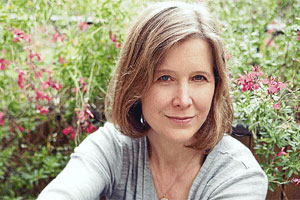
THIS IS THE STORY OF A HAPPY MARRIAGE Ann Patchett Bloomsbury $37
My Childhood. The Teenage Years. Etcetera. Memoirs tend to follow a familiar format – but when they don’t, they’re all the better for it.
The adult Ann Patchett paid her first bills as a restaurant cook, a waitress, and as a writer of non-fiction. Better known today as the author of six novels (including the Orange Prize-winning Bel Canto, and the recently short-listed State of Wonder), the American author credits Seventeen magazine as the site of her writing apprenticeship – the place where she started submitting short stories, and quickly realised non-fiction was more lucrative. Resultant life lesson “Seventeen went a long way to beat any ego out of me. Somewhere along the line I learned to experience only the smallest, most private stabbing sensation when I watched my best sentences cut from an article because they did not advance the story . . .”
Patchett writes that sentence in the first “chapter” of her “memoir” This is the Story of a Happy Marriage. All those inverted commas because, while the book offers insight into Patchett’s life and work, it is, more simply, a collection of non-fiction, first-person essays, and not one is headed “My Childhood”.
The plus is a book you can dip in and out of. Each piece of writing is a complete and excellent read, with no requirement to wade through chronological detail. The downside is wondering what detail you didn’t get – when a life is largely presented in a series of first-person, previously published pieces (Vogue, Harper’s Magazine, Gourmet, Atlantic Monthly, and so on), it’s a double-edged sword. What’s been cut What’s been edited to make for a tidier story
Through the medium of essay, the book spans everything from why Patchett owns a bookstore in Nashville, to the dog she loved, to the South Carolina campus that revolted against her book Truth and Beauty, to the man she eventually married (and the one she married much earlier than that).
Patchett considers her craft throughout. One of the longest pieces “The Getaway Car” offers a metaphor so cruel you wonder why she keeps writing. The unwritten book, she begins, is an oversize butterfly cut from the rose window in Notre Dame. Eventually, she plucks the butterfly from the air.
“I take it from the region of my head and I press it down against my desk, and there, with my own hand, I kill it . . . what I’m left with is the dry husk of my friend, the broken body chipped, dismantled and poorly reassembled. Dead. That’s my book.”
Ad Feedback
Oh – that’s why she keeps writing. Because she can. In a single paragraph, you are a lamb to her book signing table. She tricks you into her life. “My road to hell was paved” is ostensibly a travel piece about heading east in a motor home. It’s also the best commentary on relationships I’ve read in a while.
In the essay the book is named for, she considers her mother’s beauty. “The bag boys at the grocery store tried to kiss her at the car . . . She did very little to put out the many fires that were started in her wake. When I first read The Iliad in high school I had a better understanding of my life: my mother was Helen of Troy.”
Small sentences of shock and awe. Just when you think you’re about to get the “My Childhood” part of the memoir, Patchett packs a sucker-punch.
–